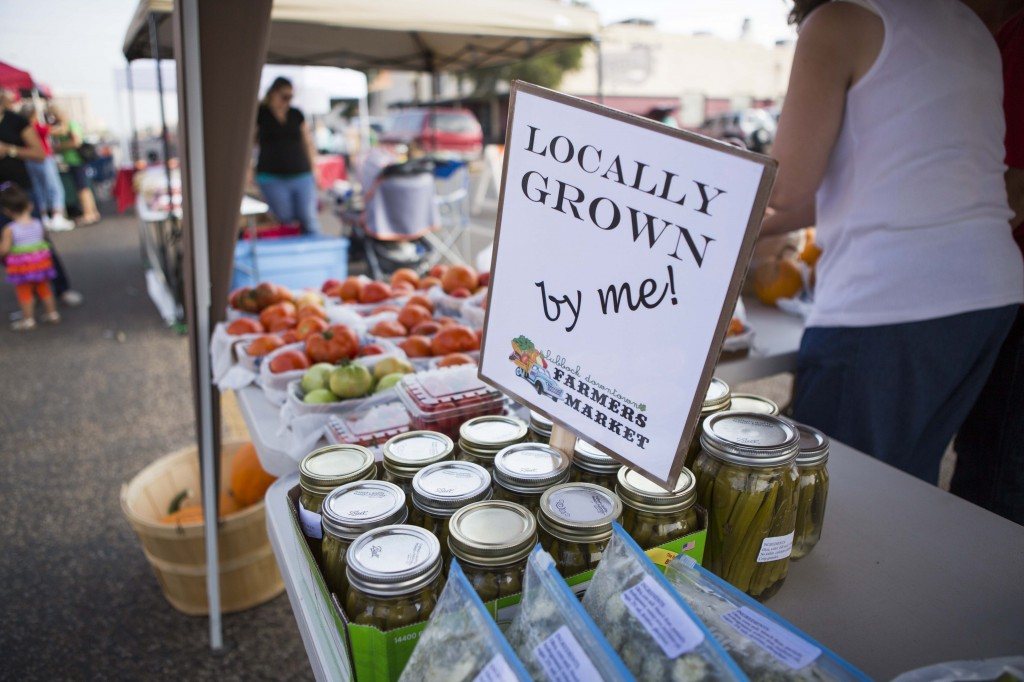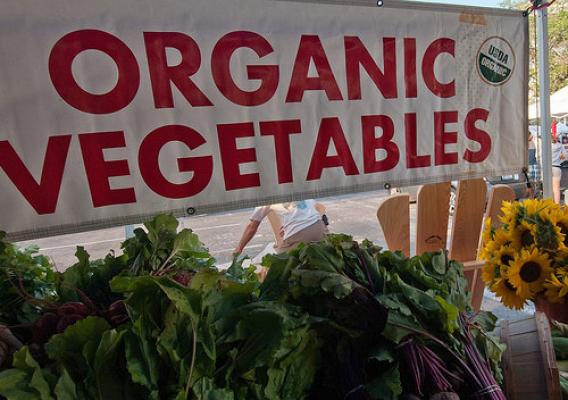This is the first post in FBLE’s series on the Local FARMS Act.

Source: Visit Lubbock
The mutualistic relationship between “urban” and “rural” is a prevalent theme throughout the United States history. The wealth of the nation’s rural resources has driven the growth of the its urban centers. However, for the first time in its history, the nation’s rural areas have seen populations decline (since 2010), while, its urban populations continue to grow.
To retain growth in rural areas, both public and private entities seek new opportunities to support local and regional food systems. GrowNYC’s Greenmarket is an example of such an initiative and is the U.S.’s largest network of outdoor farmers’ markets. The Greenmarket’s impacts have been observed both to improve entrepreneurial ability of participating farmers, and increase knowledge of farming and agricultural issues by urban consumers. (Jablonski, 2016). The Greenmarket is illustrative of capitalizing on recent trends—such as increasing consumer awareness in the source of foods, its production methods, and the impacts of its consumption—to catalyze regional and local market development.
A new marker bill, the Local Food And Regional Market Supply Act (Local FARMS Act), would catalyze similar development of local food chains. The Act focuses on both sides of the local supply chain: from “farms to forks,” and appears well equipped to scale the benefits observed in the Greenmarkets and similar initiatives.
The Local FARMS Act’s producer oriented provisions create a clear mandate for local and regional food market development. Through partnership promotion, job creation, and infrastructure development the act will help farmers reach new markets. It’s likely these provisions will provide producers with immediate feedback on products and increased sources of income – as was experience by Greenmarket’s producers. Further, the Greenmarkets’ regional development encouraged innovation and entrepreneurial opportunities to rural communities.
On the other hand, the consumer-oriented provisions seek to capitalize on market development to promote increased access to fresh and healthy local foods. In the case of the Greenmarket, consumers experienced increased awareness of rural and agricultural issues. Most importantly, urbanites were more inclined to see farming as a practicable career choice. This change in viewpoint could go a long way in stemming the decline of rural populations. Lastly, regional market development can be “a more politically palpable way to inject financial and other capital resources into rural places” to support rural development.
Producer Provisions

Source: USDA
To help producers reach new markets, the Act proposes the creation of the Agricultural Market Development (ADM) program. The Agricultural Marketing Service will oversee the ADM program and create an efficient, one-stop shop for farmers and other supply chain participants to expand local market opportunities. To promote this purpose, two existing initiatives will be consolidated and streamlined – Farmers Market and Local Food Promotion Program, and Value-Added Producer Grants Program. Included under this broad umbrella is support for farmers’ markets, farm to retail marketing, local food enterprise development, value-chain coordination, planning and feasibility studies, food hubs, producer-owned value-added enterprises, and regional planning through public-private partnerships. This full supply chain approach would receive $80 million in annual mandatory funding under the Act.
The Act also includes provisions to help producers make necessary capital investments to take advantage of market trends. This includes stable funding for the Organic Cost-Share program, at $11.5 million a year, to help domestic farmers meet the growing demand for organics. Also, the Act creates the new Food Safety Cost-Share Program, with a proposed $20 million in annual funding. This program will reimburse producers and handlers of agricultural products for the costs incurred to upgrade safety infrastructure and adopt procedures to comply with, and attain, food safety certification.
The last two producer oriented provisions aim to develop and strengthen the supply chain infrastructure that connects producers and consumers. The Food Safety Outreach Program will help beginning, small and mid-sized farms, and small fresh fruit and vegetable wholesale merchants implement food safety practices. A provision to expand the Rural Development and Farm Service Agency grant and loan program will support the development of local livestock, diary, and poultry supply chain infrastructure, with an emphasizes on the need for greater geographic distribution of state inspected meat processing facilities.
Consumer Provisions

Source: USDA
The Act’s consumer-oriented provisions promote market access for healthy and local foods. First, the Act proposes regulatory relief for school food procurement by clarifying the use of geographic preference. Specifically, the act adds locale as an allowed product specification for procurement, making it easier for schools to procure more locally- and regionally-produced food products.
Second, the Act creates a new pilot program called the Harvesting Health Program (HHP). This program utilizes a food-as-medicine approach to provide fruit and vegetable prescriptions for low-income Americans. Under the HHP, the Secretary is authorized to award grants to eligible entities to conduct pilot projects. These projects are meant to evaluate the impact of product prescription programs on low-income household. Eligible entities include emergency feeding organizations – such as hospitals and soup kitchens – as well as, farmers markets, cooperatives, and SNAP authorized retail stores. The goal of HHP is to help reduce health care costs and address food insecurity through the support of local agricultural.
Finally, the Act expands the eligibility for the Senior Farmers Market Nutrition Program to include veterans. Specifically, Section 4492 of the Farm and Security Rural Investment Act of 2002 is amended to add veterans to the programs. Under the Act, USDA must spend at least $50,000,000 to implement and expand seniors and veterans’ farmers’ market nutrition program each year between 2018 and 2022. The Act calls for seventy percent of the funds to support low-income seniors, while the other thirty percent would support low-income veteran program recipients.
